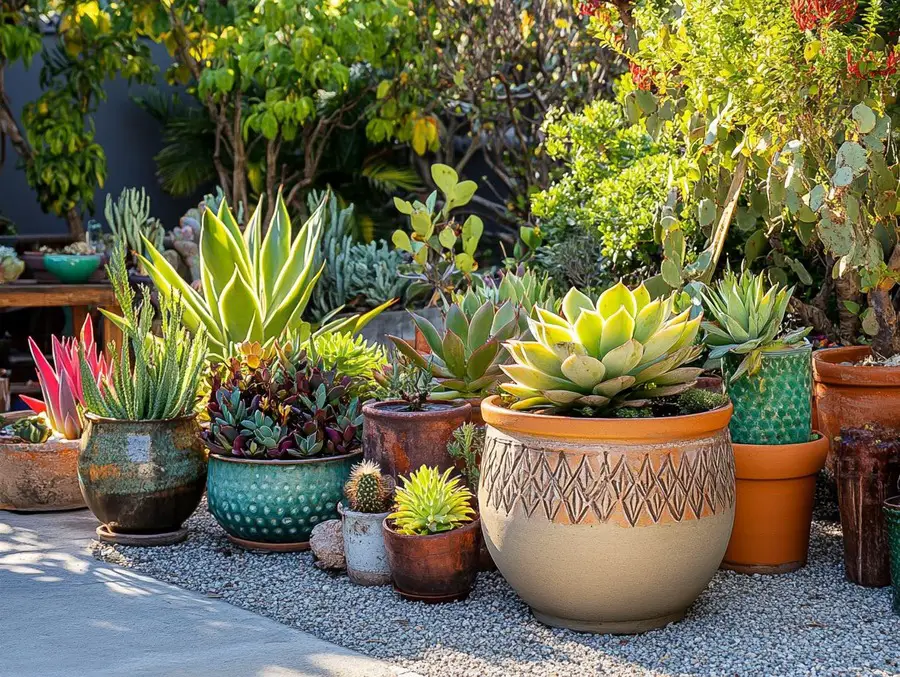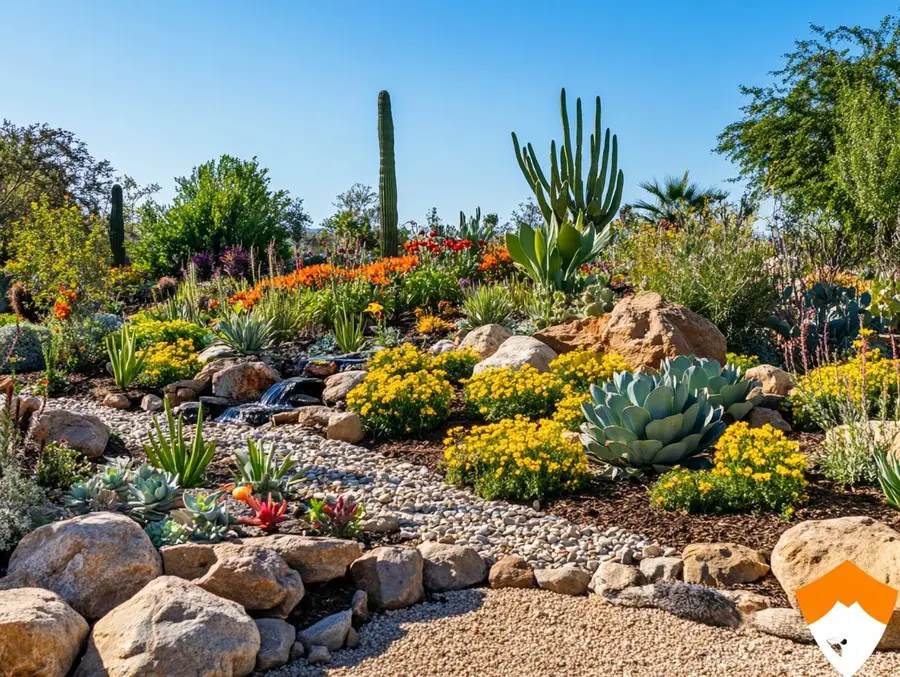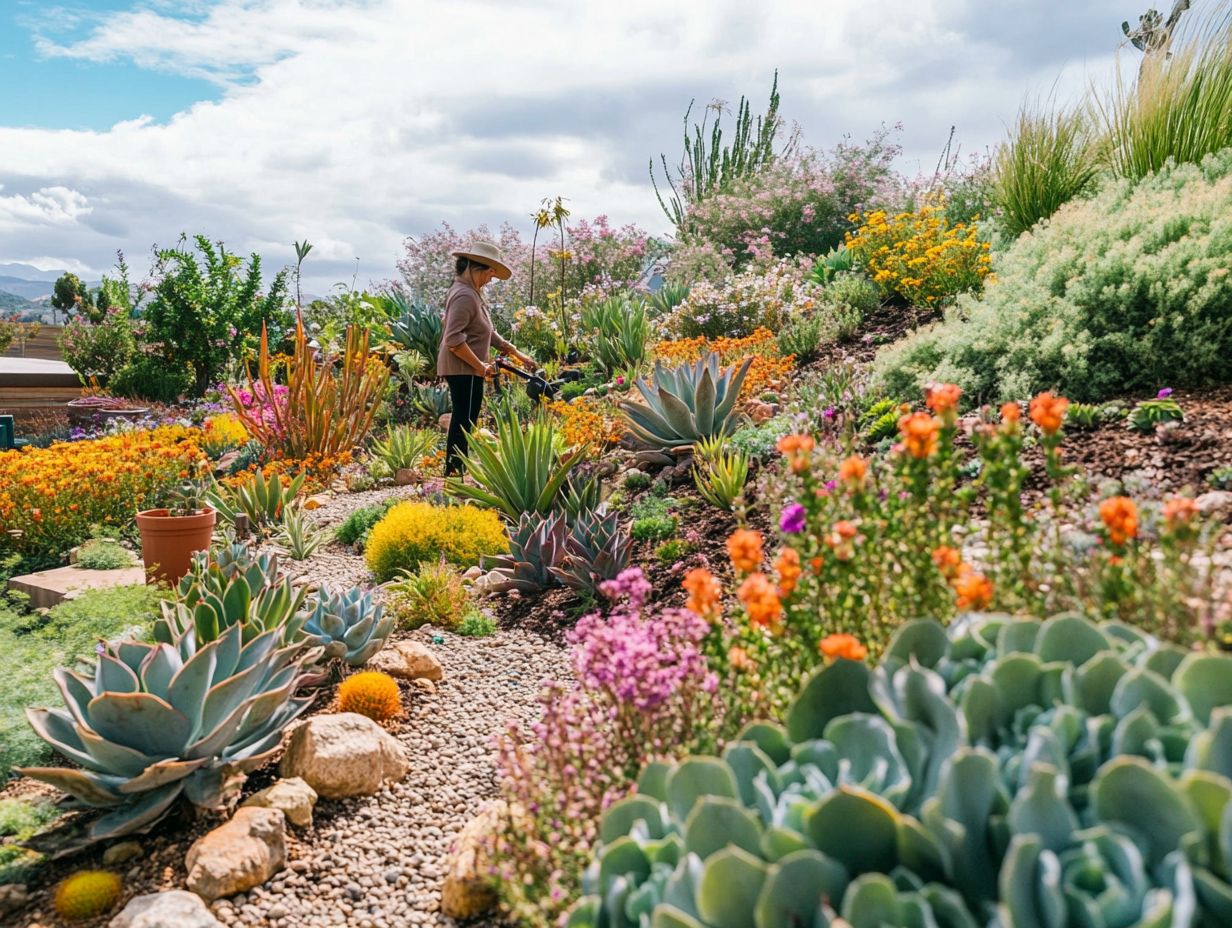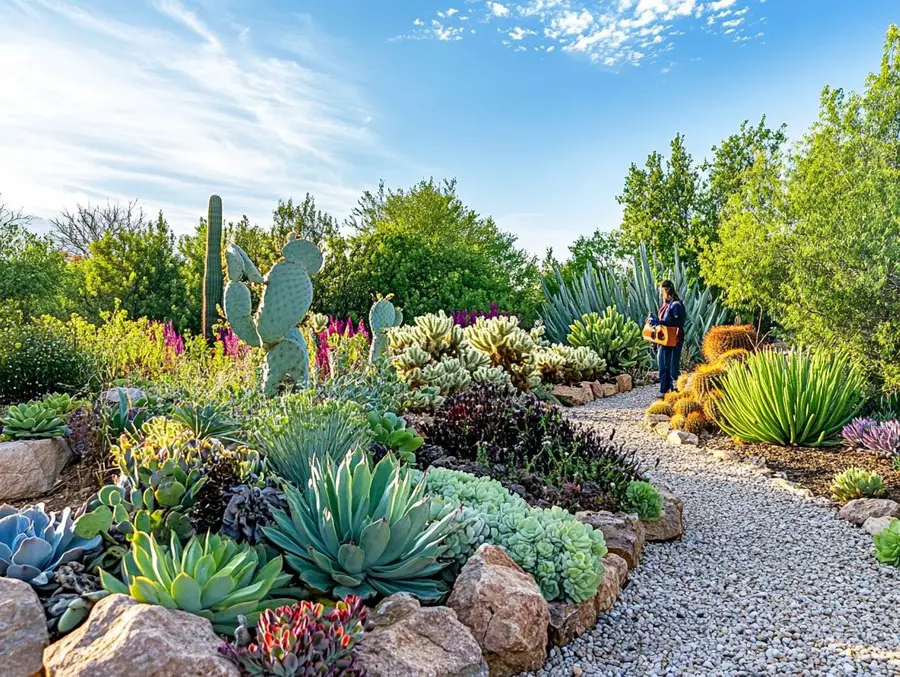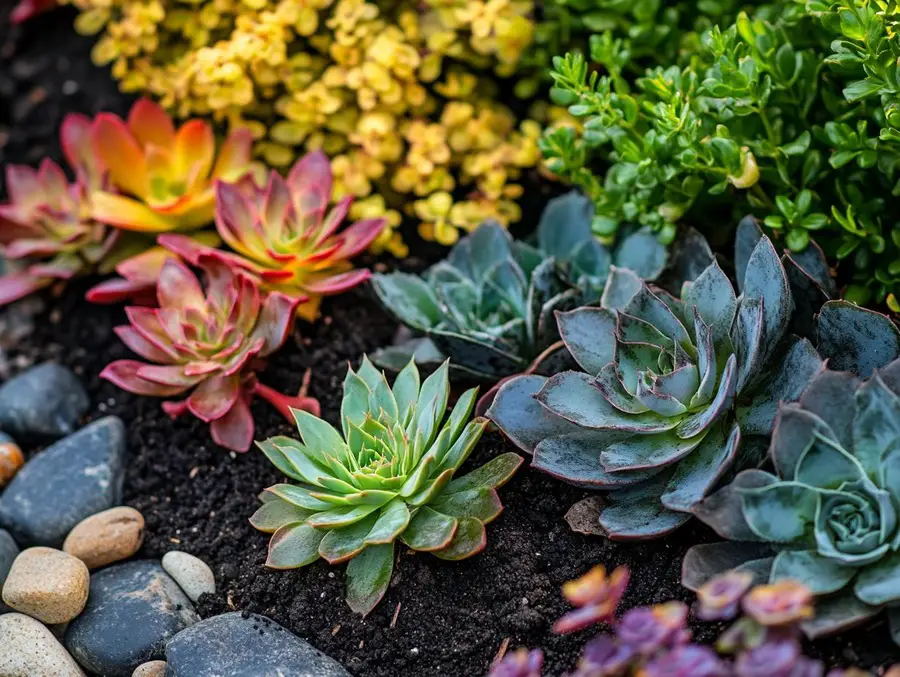We use affiliate links. If you purchase something using one of these links, we may receive compensation or commission.
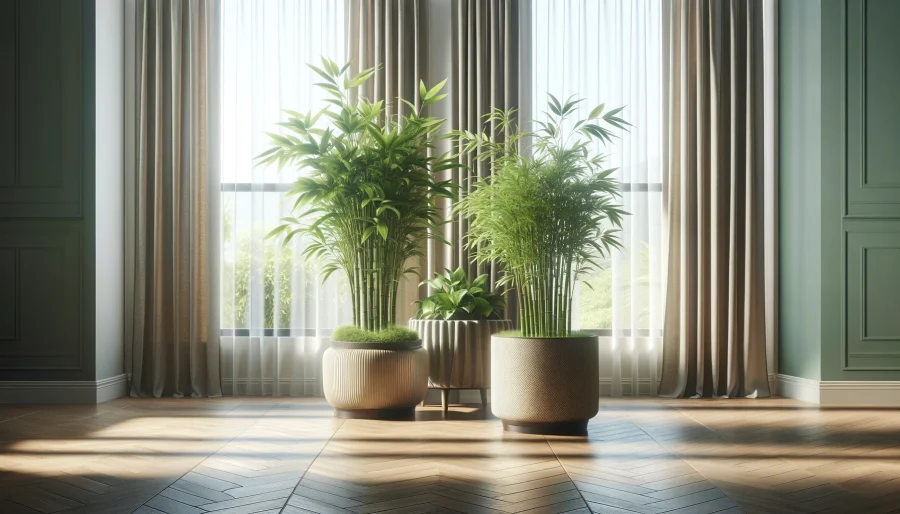
Discover the joys of growing bamboo in pots indoors! Learn how to nurture this elegant plant for a touch of greenery and tranquility in your home.
Growing Bamboo in Pots Indoors
Key Takeaways:
- For growing bamboo in pots indoors follow these tips:
- Choose a clumping variety
- Use a well-draining soil mix
- Place the pot in bright, indirect light
- Water when the top inch of soil feels dry
- Fertilize monthly during the growing season for best results.
Bringing the outdoors in has never been easier than growing bamboo in pots indoors!
This guide will show you how to cultivate this beautiful and low-maintenance plant, adding a serene and natural vibe to your living space.
Get ready to transform your home with the lush, green elegance of indoor bamboo.
Introduction: Growing Bamboo in Pots Indoors
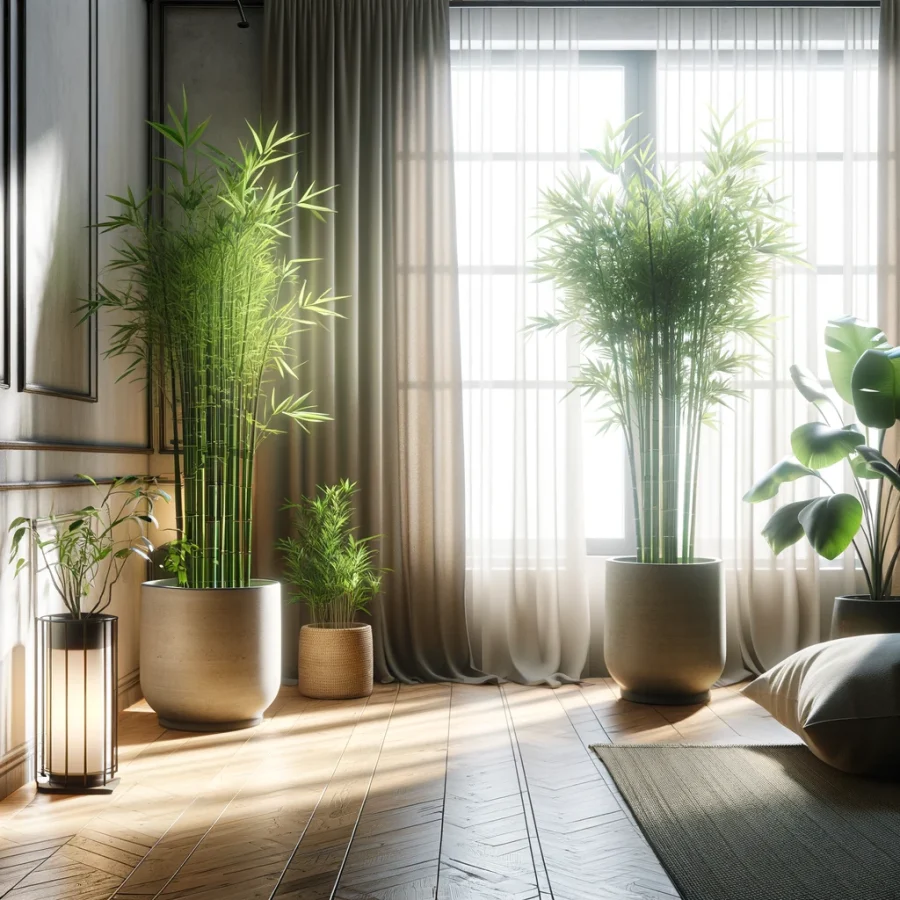
Bamboo is a versatile and fast-growing plant that can bring a touch of greenery and elegance to any indoor space.
Not only is it popular for its beauty, but bamboo is also known for its ability to create natural privacy screens, making it a great choice for balconies and indoor areas.
However, growing bamboo in pots indoors requires careful attention to ensure its health and vitality.
In this blog post, we’ll explore the benefits of indoor bamboo, the challenges you might face, and the essential care tips to help your bamboo thrive.
Popularity and Benefits of Indoor Bamboo
Bamboo has gained popularity for indoor gardening due to its unique appearance and ease of care.
Its fast growth and a tall, slender form make it an ideal plant for creating natural privacy screens in balconies and living spaces.
Additionally, bamboo is known for its air-purifying qualities, helping to improve indoor air quality.
Challenges of Growing Bamboo Indoors
While bamboo is a resilient plant, growing it indoors presents certain challenges.
It requires adequate light, humidity, and regular watering to prevent common issues such as yellowing leaves or stunted growth.
Understanding these challenges is key to maintaining healthy indoor bamboo.
Importance of Proper Care
Proper care is crucial for the success of indoor bamboo.
This includes selecting the right pot and soil, providing sufficient light and humidity, and regular pruning.
By following these care tips, you can ensure that your bamboo remains vibrant and thriving indoors.
Section 1: Choosing the Right Bamboo Variety
Choosing the right bamboo variety is crucial for successful indoor cultivation.
The two main types of bamboo are clumping and running, each with distinct characteristics and growth habits.
Clumping vs. Running Bamboo
- Clumping Bamboo: These bamboo varieties grow in tight clumps and have a slower spreading rate, making them ideal for indoor cultivation. They are easier to manage and maintain within the confines of a pot.
- Running Bamboo: Running bamboo varieties spread quickly through underground rhizomes, which can be challenging to control indoors. They are better suited for outdoor spaces where they have room to spread.
Recommended Indoor Bamboo Varieties
For indoor cultivation, consider these clumping bamboo varieties:
- Bambusa “Lady Finger”: A compact variety with slender canes and lush foliage, perfect for smaller indoor spaces.
- Multiplex Bamboo: Known for its bright green leaves and upright growth habit, this variety is easy to care for and adapts well to indoor conditions.
- Multiplex Bamboo is Clumping, Non-Invasive Form; Hardy in Zones 7b, 8, 9, 10 & 11
- Buddha’s Belly Bamboo (Bambusa ventricosa): Characterized by its unique bulging internodes, this variety adds an exotic touch to indoor spaces.

- Shiroshima Bamboo: A variegated bamboo with striking green and white leaves, ideal for adding visual interest to your indoor garden.
- Dwarf Whitestripe Bamboo: A smaller variety with white-striped leaves, perfect for tabletop displays or smaller pots.
- Mexican Weeping Bamboo (Otatea acuminata aztecorum): A graceful variety with cascading foliage, providing a soft, elegant look.
Tips for Selecting a Healthy Bamboo Plant
When choosing a bamboo plant for indoor cultivation, look for the following signs of health:
- Vibrant Green Leaves: Healthy bamboo should have bright green leaves without yellowing or brown spots.
- Sturdy Canes: Check that the canes are firm and upright, without any cracks or damage.
- Healthy Root System: If possible, inspect the roots to ensure they are white or light-colored and not overly crowded in the pot.
- No Pests or Diseases: Look for signs of pests or diseases, such as sticky residue, webbing, or unusual spots on the leaves.
By selecting the right variety and ensuring the plant is healthy, you can set the stage for successful indoor bamboo cultivation.
Section 2: Selecting the Perfect Pot
Choosing the right pot is a critical step in growing bamboo indoors.
The pot size and material, as well as proper drainage, are key factors that contribute to the health and growth of your bamboo.
Importance of Pot Size and Material
- Pot Size: The size of the pot should accommodate the bamboo’s root system and allow for growth. A pot that is too small can restrict root development, while a pot that is too large may retain excess moisture.
- As a general rule, select a pot at least 18 inches in diameter to provide enough space for the bamboo to thrive.
- Pot Material: Clay or ceramic pots are recommended for indoor bamboo because they are porous, allowing air and moisture to pass through. This helps prevent root rot and other moisture-related issues. Additionally, these materials are heavier, providing stability to support the bamboo’s growth.
- Plastic pots can be used but they are lighter and may tip over. They also don’t dry out as fast so be careful not to overwater them.
Drainage Requirements and the Role of Gravel
Proper drainage is essential to prevent waterlogged soil, which can lead to root rot and other health problems for your bamboo.
Here are some tips to ensure adequate drainage:
- Drainage Holes: Ensure your pot has sufficient drainage holes at the bottom to allow excess water to escape.
- Gravel Layer: Adding a layer of gravel or pebbles at the bottom of the pot, beneath the soil, can enhance drainage. This creates a space for excess water to collect away from the roots, reducing the risk of overwatering.
- Quality Potting Mix: Use a well-draining potting mix that retains moisture without becoming soggy. A mix of soil, peat moss, and perlite or sand is ideal for indoor bamboo.
By selecting the perfect pot with the proper size, material, and drainage, you can create an optimal environment for your indoor bamboo to flourish.
Section 3: Soil and Planting
The right soil mix and planting technique are crucial for the successful growth of bamboo in pots. Here’s how to ensure your bamboo gets the best start.
Recommended Soil Mix
A well-draining soil mix is essential for bamboo to prevent root rot and other moisture-related issues. A recommended mix is:
- 1/3 Soil: Use good quality potting soil as the base.
- 1/3 Peat Moss: Peat moss helps retain moisture while also providing aeration.
- 1/3 Perlite: Perlite improves drainage and prevents soil compaction.
This combination ensures that your bamboo roots have access to both moisture and air, promoting healthy growth.
Coco Coir
Coco coir is a sustainable alternative to using peat moss.
Coco coir and 25-30% perlite make a suitable mix and are well-draining with excellent aeration.
However, it provides no nutrients so you will need to fertilize it.
Step-by-Step Guide to Planting Bamboo in the Pot
- Prepare the Pot: Ensure your pot has drainage holes. Add a layer of gravel or pebbles at the bottom to enhance drainage.
- Mix the Soil: Combine potting soil, peat moss, and perlite in equal parts. Mix well.
- Fill the Pot: Add the soil mix to the pot, leaving about 2 inches of space from the rim.
- Plant the Bamboo: Create a shallow hole in the center of the soil. Place the bamboo plant in the hole, ensuring the roots are spread out. The top of the root ball should be level with the soil surface.
- Backfill and Water: Gently backfill the soil around the bamboo, firming it down to eliminate air pockets. Water thoroughly until water drains out of the bottom of the pot.
- Position the Pot: Place the pot in a location that receives bright, indirect light or a few hours of direct sunlight.
Following these steps and using the recommended soil mix can provide a healthy environment for your bamboo to thrive indoors.
Section 4: Light Requirements
Proper lighting is essential for the growth and health of indoor bamboo.
Understanding the light requirements and positioning your bamboo correctly can make a significant difference in its development.
Importance of Bright Indirect Natural Light
Bamboo thrives in bright, indirect natural light.
This type of light provides the energy needed for photosynthesis without the harshness of direct sunlight, which can scorch the leaves.
Bright indirect light ensures that your bamboo grows steadily and maintains vibrant green foliage.
Possibility of a Few Hours of Direct Sun
While bamboo prefers indirect light, it can also tolerate a few hours of direct sunlight, especially in the morning or late afternoon when the sun is less intense.
This can help boost growth and enhance the plant’s color.
However, it’s essential to monitor your bamboo for any signs of stress, such as yellowing or burnt leaves, and adjust its exposure accordingly.
Tips for Positioning the Pot for Adequate Light Exposure
- Near a Window: Place the pot near a window that receives plenty of natural light throughout the day. East or west-facing windows are ideal.
- Use Curtains or Blinds: If the sunlight is too intense, use sheer curtains or blinds to diffuse the light and protect your bamboo from direct sun.
- Rotate the Pot: Periodically rotate the pot to ensure all sides of the bamboo receive equal light exposure, promoting even growth.
- Supplemental Lighting: In low-light conditions, consider using grow lights to provide the necessary light for your bamboo. Position the lights above the plant and keep them on for 12-14 hours a day to mimic natural daylight.
By providing your indoor bamboo with the right amount and type of light, you can help it thrive and grow beautifully in your home.
Section 5: Watering and Humidity
 Proper watering and maintaining the right humidity levels are crucial for the health and growth of indoor bamboo.
Proper watering and maintaining the right humidity levels are crucial for the health and growth of indoor bamboo.
Here are some guidelines to help you keep your bamboo hydrated and happy.
Guidelines for Watering
- Consistent Moisture: Keep the soil consistently moist but not waterlogged. Bamboo does not like to sit in water, as this can lead to root rot.
- Check the Soil: Before watering, check the top 2-3 inches of soil. If it feels dry, it’s time to water. If it’s still moist, wait a bit longer.
- Water Deeply: When you water, do so deeply to ensure the water reaches the roots. Allow excess water to drain out of the pot.
- Reduce Watering in Winter: During the colder months, bamboo requires less water. Adjust your watering schedule accordingly.
Importance of High Humidity
Bamboo thrives in a humid environment, as it mimics its natural tropical habitat.
Indoor air, especially in winter, can be dry, which can stress your bamboo.
Methods to Increase Humidity
- Daily Misting: Use a spray bottle to mist your bamboo leaves daily. This helps increase humidity and keeps the leaves clean.
- Humidifier: A humidifier can add moisture to the air, benefiting both your bamboo and other indoor plants.
- Pebble Tray: Place a tray filled with pebbles and water beneath your bamboo pot. As the water evaporates, it increases the humidity around the plant.
- Group Plants: Placing your bamboo near other indoor plants can create a microclimate with higher humidity.
By following these watering and humidity guidelines, you can ensure that your indoor bamboo remains healthy and continues to grow beautifully.
Section 6: Temperature and Air Movement
Maintaining the ideal temperature range and ensuring proper air movement is essential for the health and growth of indoor bamboo.
Ideal Temperature Range for Indoor Bamboo
- Temperature Range: Bamboo thrives in temperatures between 60°F and 80°F (15°C to 27°C). This range is typically comfortable for indoor living spaces, making bamboo an ideal houseplant.
- Avoid Extremes: Keep your bamboo away from extreme temperatures, such as cold drafts or direct heat sources like radiators or heating vents. Sudden temperature changes can stress the plant.
Benefits of Air Circulation
Proper air circulation is crucial for preventing diseases and ensuring healthy growth.
- Prevents Disease: Good air movement helps prevent fungal diseases by reducing leaf moisture.
- Strengthens the Plant: Gentle air movement can also help strengthen the plant’s structure, promoting sturdier growth.
Tips for Providing Fresh Air to the Plant
- Open Windows: Periodically open windows to allow fresh air to circulate around the plant. This is especially important in rooms with limited airflow.
- Use Fans: A ceiling fan or oscillating fan on a low setting can provide gentle air movement. Ensure the fan is not blowing directly on the bamboo to avoid excessive drying.
- Positioning: Place your bamboo in an area where air naturally circulates, such as near an open door or a lightly trafficked hallway.
By maintaining the ideal temperature range and ensuring proper air circulation, you can create a healthy environment for your indoor bamboo to thrive.
Section 7: Fertilization
Proper fertilization is crucial for supporting the growth and health of indoor bamboo.
Here’s a guide to help you fertilize your bamboo effectively.
Recommended Fertilization Schedule
- Growing Season: Fertilize your bamboo during the growing season, which is typically from spring to early fall. During this time, apply fertilizer once a month.
- Dormant Season: Reduce fertilization in the dormant season (late fall to winter) to once every two months or stop altogether, as the plant’s growth slows down.
Types of Fertilizers for Indoor Bamboo
- Balanced Liquid Fertilizer: Use a balanced liquid fertilizer with an N-P-K ratio of 10-10-10 or 20-20-20. Liquid fertilizers are easy to apply and provide nutrients directly to the roots.
- Slow-Release Granular Fertilizer: You can also use a slow-release granular fertilizer with a similar N-P-K ratio. This type of fertilizer releases nutrients gradually over time.
Dosage Instructions Based on the Size of the Container
- Small Pots (up to 1 gallon): Use 1 teaspoon of liquid fertilizer diluted in 1 gallon of water, or follow the instructions on the package for granular fertilizer.
- Medium Pots (1-5 gallons): Increase the dosage to 1 tablespoon of liquid fertilizer per gallon of water.
- Large Pots (5 gallons and above): Use 2 tablespoons of liquid fertilizer per gallon of water.
Always follow the manufacturer’s instructions on the fertilizer package for the best results.
Over-fertilization can harm your bamboo, so it’s essential to apply the correct amount based on the size of your container.
By following these fertilization guidelines, you can ensure that your indoor bamboo receives the nutrients it needs to grow strong and healthy.
Using Fertilizer Spikes
In addition to liquid and granular fertilizers, you can also consider using fertilizer spikes as a slow-release method for feeding your indoor bamboo.
Fertilizer spikes are inserted into the soil near the plant’s base and slowly release nutrients over time.
They are convenient to use and reduce the risk of over-fertilization.
However, it’s important to follow the package instructions for the correct number of spikes and placement based on the size of your pot and plant.
This method ensures a steady supply of nutrients, supporting your bamboo’s growth and health throughout the growing season
Section 8: Pruning and Maintenance
Regular pruning and maintenance are essential for keeping your indoor bamboo healthy and well-shaped.
Here’s how you can effectively prune and maintain your bamboo plant.
Techniques for Pruning Bamboo
- Height Control: To control the height of your bamboo, use sharp pruning shears to cut the canes (culms) just above a node (the joint between two segments). This encourages branching and creates a fuller appearance.
- Thinning: If your bamboo becomes too dense, thin it out by removing some of the older or weaker culms at the base. This improves air circulation and allows light to reach the inner parts of the plant.
- Shaping: You can shape your bamboo by selectively pruning branches to create your desired form. Be careful not to remove more than one-third of the foliage at a time to avoid stressing the plant.
Guidelines for Root Trimming and Repotting
- Root Trimming: Over time, the roots of your bamboo may become crowded in the pot, leading to a condition called being “root-bound.” To prevent this, gently remove the bamboo from its pot every 2-3 years and trim the outer roots. Use clean, sharp scissors or pruning shears to cut away any circling or overly long roots.
- Repotting: After trimming the roots, repot the bamboo in fresh soil and a slightly larger pot if necessary. This gives the roots more room to grow and ensures the continued health of your plant.
Regular pruning and maintenance not only keep your indoor bamboo looking its best but also promote vigorous growth and prevent potential problems associated with overcrowding and poor air circulation.
Section 9: Common Problems and Solutions
Growing bamboo indoors can sometimes present challenges. Here are some common issues you might encounter and how to address them:
Yellowing Leaves
- Cause: Yellowing leaves can be a sign of overwatering, underwatering, or lack of nutrients.
- Solution: Check the soil moisture and adjust your watering schedule accordingly. If the soil is consistently moist, reduce watering. If it’s dry, increase the watering frequency. Consider fertilizing if the plant lacks nutrients.
Root Rot
- Cause: Root rot is often a result of overwatering and poor drainage, leading to waterlogged soil.
- Solution: Ensure your pot has adequate drainage holes and use a well-draining soil mix. If you suspect root rot, remove the plant from the pot, trim away the rotten roots, and repot in fresh soil.
Pest Infestations
- Common Pests: Indoor bamboo can attract pests like spider mites, mealybugs, and scale insects.
- Solution: Regularly inspect your plant for signs of pests. If you find any, isolate the affected plant to prevent spreading. You can treat mild infestations with insecticidal soap or neem oil. For severe infestations, you may need to use a systemic insecticide.
Tips for Troubleshooting and Maintaining Plant Health
- Regular Inspections: Regularly inspect your bamboo for signs of stress or pests.
- Proper Care: Follow the care guidelines for watering, lighting, and fertilization to prevent issues.
- Cleanliness: Keep the leaves clean by gently wiping them with a damp cloth to remove dust and potential pests.
By being proactive and attentive to your indoor bamboo needs, you can prevent common problems and maintain a healthy, thriving plant.
If you encounter persistent issues, consider consulting with a local nursery or plant expert for additional guidance.
Growing Indoor Bamboo in Pots FAQs
Growing bamboo in pots indoors can raise a lot of questions, especially for those new to the practice.
Here are some frequently asked questions and their answers to help you navigate the process of cultivating healthy, thriving bamboo plants in your home.
Q. Does bamboo do well in pots?
A. Yes, bamboo can do well in pots if provided with proper care, including the right soil mix, adequate watering, sufficient light, and regular fertilization.
Q. How deep should a bamboo planter be?
A. A bamboo planter should be at least 18 inches deep to accommodate the root system and provide room for growth.
Q. How do you keep potted bamboo alive?
A. To keep potted bamboo alive, ensure it receives bright indirect light, water it to keep the soil consistently moist but not waterlogged, maintain high humidity, and fertilize regularly during the growing season.
Q. Can bamboo grow in full sun?
A. Bamboo can grow in full sun, but it prefers bright indirect light or a few hours of direct sun, especially in the morning or late afternoon, to prevent leaf scorch.
Q. Do you water bamboo every day?
A. It’s not necessary to water bamboo every day. Water when the top 2-3 inches of soil feel dry, and ensure the soil is consistently moist but not waterlogged.
Q. Can bamboo go outside in summer?
A. Yes, bamboo can be placed outside in summer in a shaded or partially shaded area to prevent overheating and sunburn. Ensure it’s acclimated gradually to outdoor conditions.
Q. What temperature kills bamboo?
A. Temperatures below freezing (32°F or 0°C) can damage or kill some bamboo, especially if exposed for prolonged periods. It’s best to keep indoor bamboo within a comfortable temperature range of 60°F to 80°F (15°C to 27°C).
Bamboo metroplex is a hardy clumping bamboo good to about 5°F
Q. Do you plant bamboo in soil or rocks?
A. Bamboo should be planted in soil, specifically a well-draining potting mix that includes soil, peat moss, and perlite.
Lucky bamboo which is not a true bamboo can be grown in rocks with water.
Q. How long will bamboo last outdoors?
A. The lifespan of bamboo outdoors depends on the species and environmental conditions. Clumping bamboo varieties can live for several decades, while running bamboo may spread and survive for many years if properly managed.
Growing Bamboo in Pots Indoors Conclusion
Growing bamboo in pots indoors is a rewarding experience that brings a touch of nature and elegance to your home. By following the key points outlined in this guide, you can ensure the success of your indoor bamboo and enjoy its beauty and benefits.
Recap of Key Points
- Choosing the Right Variety: Select a suitable clumping bamboo variety for indoor growth.
- The Perfect Pot: Use a pot with adequate size, drainage, and a suitable material like clay or ceramic.
- Soil and Planting: Opt for a well-draining soil mix and plant your bamboo correctly.
- Light Requirements: Provide bright indirect light with a few hours of direct sun.
- Watering and Humidity: Keep the soil consistently moist and maintain high humidity levels.
- Temperature and Air Movement: Maintain a comfortable temperature range and ensure good air circulation.
- Fertilization: Feed your bamboo with a balanced fertilizer during the growing season.
- Pruning and Maintenance: Regularly prune and maintain your bamboo to control its growth and shape.
- Common Problems and Solutions: Be vigilant about potential issues like yellowing leaves, root rot, and pests, and address them promptly.
Read more: Discover the secrets to keeping your bamboo plants thriving indoors
Apartment Gardening Comprehensive Guide for Beginners
Encouragement for Growing Indoor Bamboo
We encourage you to try growing your own indoor bamboo.
It’s not only a beautiful addition to your home decor but also offers benefits such as air purification and creating natural privacy screens.
With a little care and attention, your indoor bamboo can thrive and bring a sense of tranquility and greenery to your living space.
By following these guidelines, you can enjoy the lush beauty and peaceful ambiance that indoor bamboo provides.
Happy gardening!
Resources Section
For those interested in diving deeper into the world of indoor bamboo gardening, here are some recommended resources that provide valuable information and guidance:
- The American Bamboo Society is a non-profit organization that promotes bamboo cultivation, research and appreciation.
- Bamboo Botanicals – Offers a comprehensive guide on growing bamboo, including tips on care and maintenance. Bamboo Botanicals
- Learn how to grow bamboo in containers, the ground, or as living screens for privacy and screening. Better Homes and Gardens
These resources can help you gain a better understanding of indoor bamboo gardening and ensure the success of your bamboo plants. Happy exploring!
Related Content
Visit my Amazon Influencer Page for videos and gardening products Grow Your Own Garden











